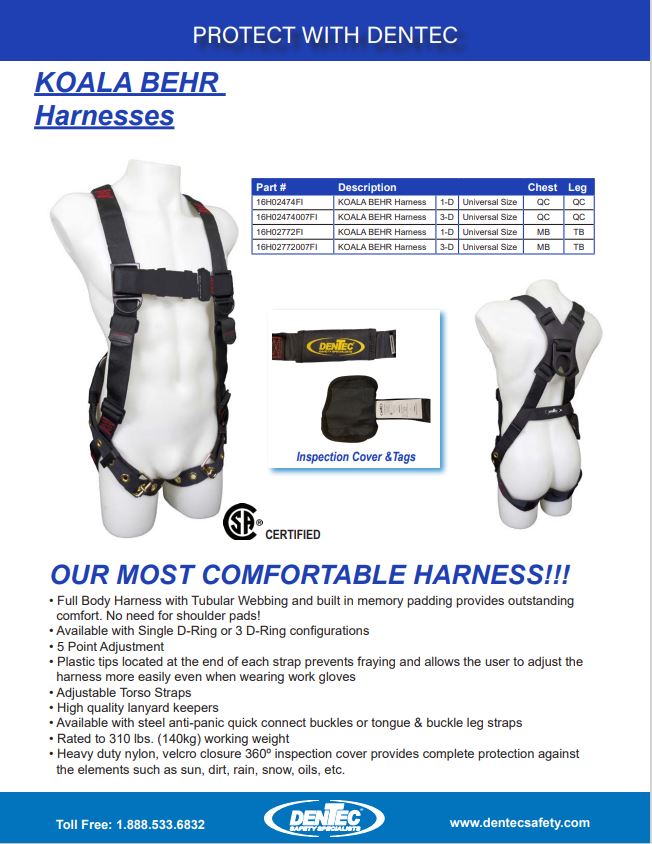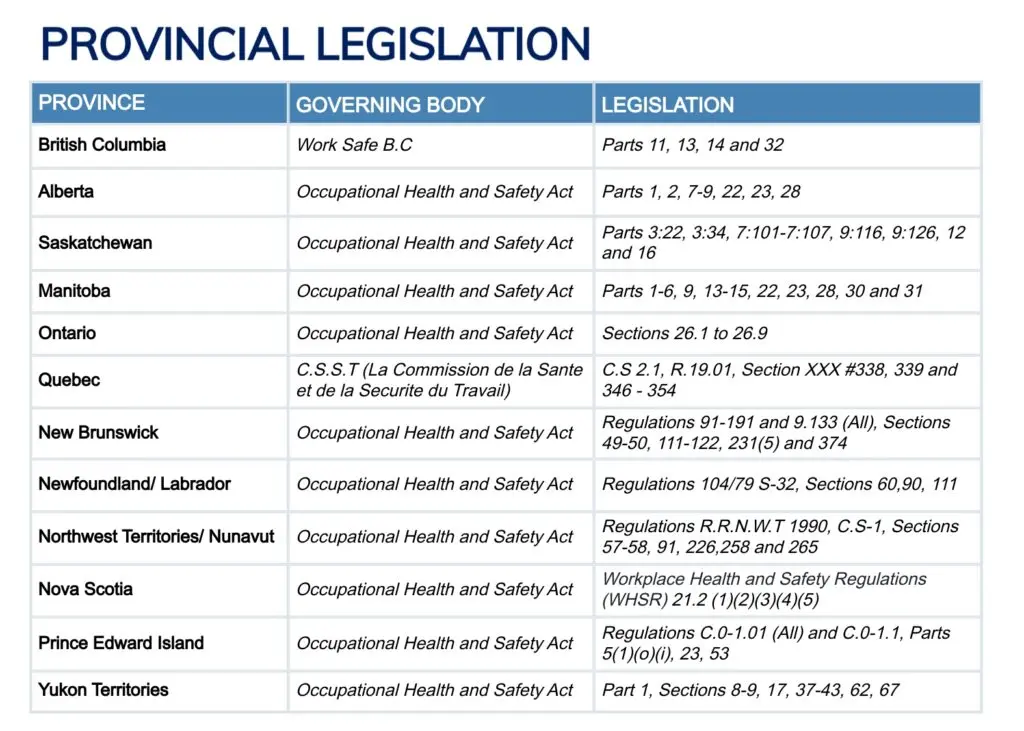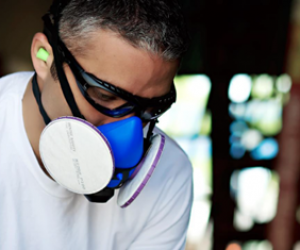Fall protection regulations in Canada are designed to minimize the risks associated with working at heights. Generally, fall protection is required for any work at a height of 3 meters (10 feet) or more. This height threshold applies across various industries, including construction, maintenance, manufacturing, and more. When work is conducted at or above this elevation, employers are mandated to implement fall protection measures to ensure the safety of their employees. It is important to note that fall protection may be required at heights less than the 3-meter threshold if a hazard exists that may cause injury or loss of life in the event of a fall.
See the examples from Canada Occupation Health & Safety Regulations (SOR/86-304, AB Alberta and NS Nova Scotia)
COHSR
(c) at a height of less than 3 m if the surface onto which the person might fall would present a greater risk of injury than a solid, flat surface.
Alberta
b) at a temporary or permanent work area, a vertical distance of less than 3 metres if there is an unusual possibility of injury,
(c) at a temporary or permanent work area, into or onto a hazardous substance or object, or through an opening in a work surface, or
(d) at a permanent work area, a vertical distance of more than 1.2 metres and less than 3 metres.
Nova Scotia
less than 3 meters and the work area is above 1 of the following:
(i) a surface or thing that could cause injury to the person on contact that is worse than an injury from landing on a solid, flat surface,
(ii) exposed hazardous material, such as in an open tank, pit or vat.

Exceptions for Height Requirements
While the 3-meter rule serves as a guiding principle, certain exceptions exist based on the nature of the work and the potential risks involved. Some exceptions include:
a) Guardrails and Barriers: In situations where guardrails or barriers are in place, fall protection systems may not be required. These physical barriers serve as preventive measures, reducing the need for additional fall protection.
b) Agricultural Work: Workers engaged in specific agricultural activities might be exempt from fall protection regulations. However, it’s crucial for employers to carefully assess each situation and provide adequate safety measures as needed.
c) Emergency Situations: During emergency response or rescue operations, fall protection requirements may be relaxed to facilitate swift and safe evacuations. Nonetheless, once the emergency subsides, regular fall protection measures must be reinstated.
At What Height is Fall Protection Required on Scaffolds and Ladders?
Scaffolding: Scaffolding is a commonly used structure in construction and maintenance projects. When working on scaffolds, fall protection measures are particularly crucial due to the elevated risks involved. Canadian regulations stipulate that any worker on a scaffold that is 3 meters or higher must be protected by guardrails, personal fall arrest systems (PFAS), or other suitable fall protection mechanisms.
Ladders: Ladders are essential tools across various industries, but they also pose fall risks if not used correctly. When using ladders in Canada, employers must ensure that they are securely positioned, stable, and equipped with anti-slip features. If a worker is required to climb a ladder that exceeds the 3-meter threshold, additional fall protection measures such as PFAS must be in place.
Fall Protection Standards and Legislation in Canada
Canadian Standards Association (CSA): The CSA provides crucial guidelines for fall protection in Canada. The CSA Z259 series of standards covers fall protection equipment, systems, and practices. For instance, Z259.16-15 (R2020) provides recommendations for designing and installing horizontal lifeline systems.
Occupational Health and Safety (OH&S) Regulations: Each province in Canada has its own set of OH&S regulations that govern workplace safety. These regulations often incorporate CSA standards and tailor them to suit specific provincial needs. Employers must be aware of both federal and provincial regulations to ensure full compliance.

At What Height is Fall Protection Required in Your Province?
It’s essential to note that while federal regulations provide a foundation, each Canadian province can introduce its own nuanced requirements. For example:
Ontario: Ontario’s OH&S Act requires fall protection for work at heights of 3 meters or more, mirroring federal regulations. However, the province has additional provisions regarding training and certification for workers using fall protection systems.
Alberta: Alberta’s OH&S Code stipulates that employers must protect workers from falling when working at 2.4 meters or more. This height threshold is lower than the federal standard, reflecting the province’s commitment to stringent safety measures.
Provincial Fall Protection Legislation

In Canada, fall protection is not a choice; it’s an obligation. Dentec Safety Specialists recognize the importance of safeguarding workers engaged in tasks at heights. Whether on scaffolds or ladders, in construction or agriculture, adhering to fall protection regulations saves lives. With a general height threshold of 3 meters, exceptions for specific scenarios, and province-specific variations, Canadian employers must stay informed and up-to-date with the latest safety standards and regulations. By prioritizing fall protection, we collectively ensure that every worker returns home safely after every shift.
Interested in implementing a fall protection program? Contact us to speak with one of our safety specialists who can review the standards and requirements and conduct a training session for you and your team.

Dentec Safety is a leading manufacturer and distributor of safety products in the North America since 2004. Dentec Safety is dedicated to providing the highest quality safety products and solutions delivering enhanced value and comfort. Our expertise from decades of experience in Industrial Safety and our innovative design technologies have solidified us as thought leaders in the field. Protection and comfort are at the core of everything we do at Dentec. As a leading manufacturer of Safety Solutions, it is our mission to help organizations do the right thing, keep their employees safe and exceed Industry Health & Safety Standard.









